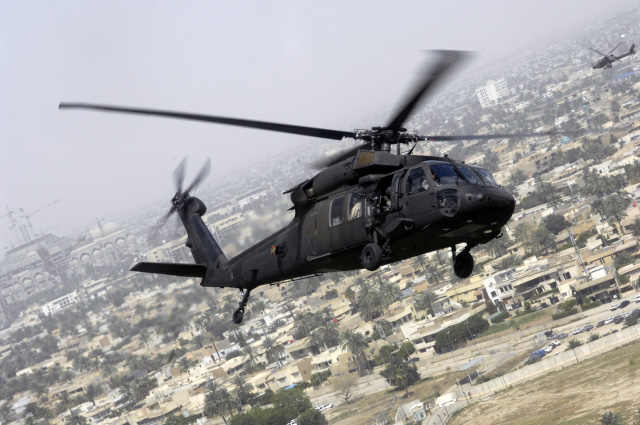Sikorsky appears to be the only potential contractor willing to bid for the US Air Force's combat rescue helicopter (CRH) programme.
"Sikorsky intends to continue with its proposal to offer the air force a proven, affordable combat rescue helicopter system to perform the critical mission of saving warfighters' lives," the company says.
The company is likely to bid a modified variant of its MH-60 Black Hawk special operations aircraft for the USAF tender. It is already building Black Hawks as part of the service's operational loss replacement effort to shore up an existing fleet of HH-60G Pave Hawks - a type that would be replaced by the CRH. For a time, the USAF had considered placing a sole-source contract with Sikorsky, before eventually bowing to pressure from rivals to hold a full competition.
 |
|---|
| US Army |
However, every other potential contender for the USAF contract, which is capped at $6.84 billion, has decided not to bid for the programme. Many of the contractors dropped out because of the evaluation criteria for the bids, says Dan Goure, an analyst at the Lexington Institute, who notes that this "essentially makes this a price shootout".
"A thorough analysis of the final RFP [request for proposals] has been conducted and Northrop Grumman has determined that it will not submit a bid to the US Air Force for the combat rescue helicopter programme," Northrop says. "We've reached this conclusion based on an extensive evaluation of customer requirements under the current RFP."
Northrop, which is partnered with European airframer AgustaWestland, had intended to offer a variant of the AW101 for the CRH effort. "This decision was made jointly with our teammate AgustaWestland and will have no effect on the team's pursuit of the US Navy presidential helicopter programme," it adds.
Like Northrop and AgustaWestland, EADS has also decided not to pursue the opportunity. "After carefully evaluating the RFP, we have decided that we will not submit a bid. As with any bid/no-bid decision, a multitude of factors were considered in our analysis," the company says. EADS has not publicly said which aircraft it had intended to offer, but it is likely it would have pitched the Eurocopter EC725.
Boeing, which had won the original combat search and rescue replacement vehicle (CSAR-X) contract in 2006 with its CH-47 Chinook, is also dropping out. "While both the Boeing H-47 Chinook and the Bell Boeing V-22 Osprey have well-documented successes conducting search and rescue missions, neither aircraft is competitive for this programme as it is currently structured," the company says.
Bell Helicopter, which had considered offering its UH-1Y, is also declining to bid. "Unfortunately, the CRH requirements as written do not accommodate advanced technologies such as the V-22 or the UH-1Y, which offer lower overall operating costs, consequently neither product will be offered as a solution for the CRH programme," the company says.
The USAF, for its part, says that it is committed to an "open and transparent" process in selecting a new helicopter. "To ensure this occurs, we are prohibited from releasing information while in the request for proposal and selection processes," the service says.
Given the USAF's long and troubled history with acquisition programmes, there may be fall-out at the Pentagon over how the service has handled the CRH procurement, Goure says. "It may be perfectly legitimate, but in a world where DoD [Department of Defense], where [Deputy Secretary of Defense] Ash Carter is demanding more competition, they just wrote a contract that sort of precludes competition," he says.
Source: Flight International


























